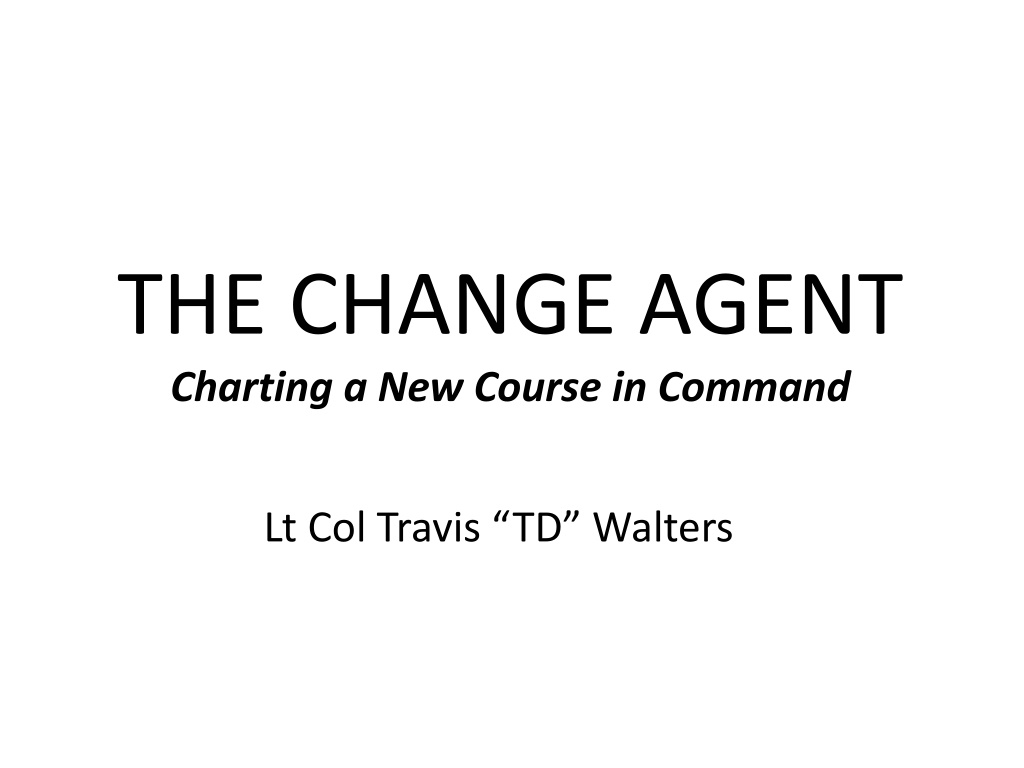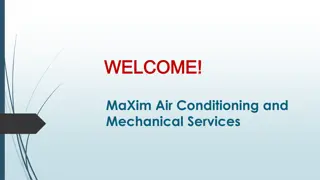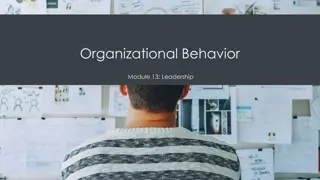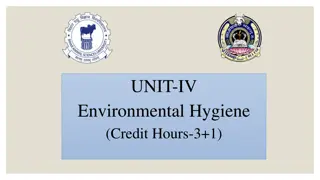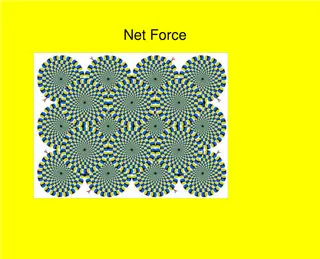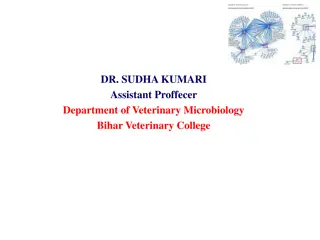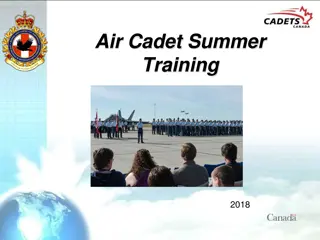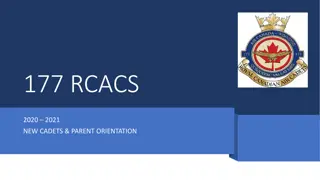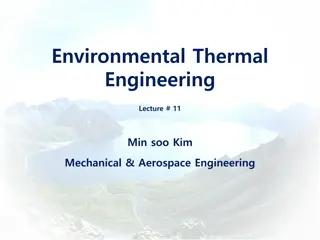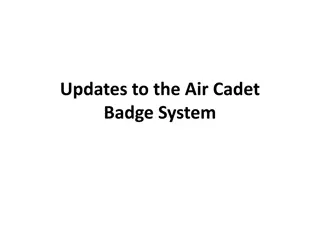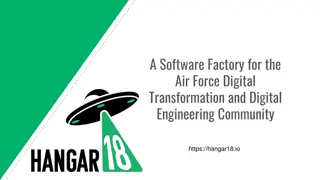Leadership Transformation in an Air Force Squadron
Lt. Col. Travis TD Walters leads a significant transformation in command, addressing challenges such as fitness improvement, communication gaps, and retention issues. Through a phased approach, standards, communication processes, and recognition are enhanced, leading to notable improvements in personnel performance and unit success.
Download Presentation

Please find below an Image/Link to download the presentation.
The content on the website is provided AS IS for your information and personal use only. It may not be sold, licensed, or shared on other websites without obtaining consent from the author. Download presentation by click this link. If you encounter any issues during the download, it is possible that the publisher has removed the file from their server.
E N D
Presentation Transcript
THE CHANGE AGENT Charting a New Course in Command Lt Col Travis TD Walters
MXS: The Squadron Unit Breakdown - 1 O-5 - 1 O-4 (OIC) - 2 CGOs - 2 E-9s - 8 E-8s - 22 E-7s - 120 E-6/below FT Breakdown - 1 OIC - 57 Mx Techs - 2 AGRs (Muns) - 9 E-8s/E-9s FT MXS/CC Mx Ops Officers OIC First Sergeant CSS Spec Pro Sup E-8 EMB E-9 CRB E-9 Accessories E-8 Avionics E-8 AGE E-8 ISO E-8 Propulsion E-8 Fabrication E-8 MUNS E-8 *160-person unit (largest Sq in Wg) responsible for C-130 backshop Mx*
9 Jan 2015: The Issues When named, Step 1 is AOL: Ask, Observe, Listen Squadron Assumption of Command 51 enlisted personnel in Fitness Improvement Program (FIP) almost 1/3 of the unit 29 had three or more failures in a 36-mth period Leadership action lacking in recent years Emphasis item for new Gp/CC & Wg/CC Virtually no Sq/CC communication to unit Technician vs. Traditional division Processes/paperwork needed improvement
24 Sep 2016: The Results 44: LOCs/LORs (fitness) 6: LOCs/LORs (other) 24: Retention recommendations (fitness) 9: Denials of re-enlistment 5: Discharges (drug use, etc.) 70: Percentage cut to MXS fitness failure rate 53: MXS promotions (11 to SNCO ranks!) 67: Decorations awarded, first AFOUA in 24 yrs 0: IG complaints
A Phased Approach: The Plan Phase I (Jan Dec 2015) Standards (PT) Communication Processes Recognition Phase II (Jan Jun 2016) Tracking Training Growth Phase III (Jul Sep 2016) Sustain New CC Transition
Phase I: Standards (PT) My Priority: People & Standards to enable you to Focus on the Mission Immediately processed all retention recs to Wg/CC Recommended only one non-retain All others got one final chance, then non-retained CC-owned pgm; established progressive discipline 1st Failure/36 mths: Enrolled in FIP, no action from CC 2nd: LOC from CC 3rd: LOR from CC 4th: LOR from CC, non-retention rec from CC Set example: lost 12 lbs in 1 month, taught FIP how Closely monitored profiles, but let MDG do their jobs my own medical situation helped
MXS/CC Office Arrangement Door Your people engagements should be very purposeful Sup Mbr Table OIC Mbr Chief Shirt CC Legend Couch (Shirt And Chief) MXS/CC Desk Chairs People Standing CC
Phase I: Standards (Other) Fostered an Airman First mentality; common identity that binds us together Airman First, Engine Mechanic Second Airman First, Technician Second Emphasized warfighting/ancillary requirements Are you ready? Are the Herks ready? AFI 1-1 (Air Force Standards) AFI 1-2 (Commander s Responsibilities) for you! AFI 36-2618 (The Enlisted Force Structure)
Phase I: Communication Messaging Tips Over communicate intentionally KISS (Keep it Simple Stupid) vocabulary, taskings Help unit understand the why Monthly Drill Flyer out NLT Tuesday before RSD Schedules Requirements (who is due for tng, medical, fitness) Sq/CC Column Guidance to E-8/E-9 Boards (Open Letter) Use your Bully Pulpit well, especially in 1-on-1s
Phase I: Communication (CC Calls) Expectations Brief following Assumption of Cmd, then qtrly MXS/CC Calls every RSD Saturday, 0730-0800 Formalized brief with same agenda each month: Recognition (Promotions through E-7) Commander s Intent MXS/CC Monthly Priorities Weekend Highlights Mentorship Minute Vector Check/Looking Ahead A Parting Thought Emailed E-8s/above with brief & notes the day before Maximized information flow to unit, set tone for drill, and never exceeded 30 minutes
COMMANDERS INTENT The 136th Maintenance Squadron will execute on order the production and projection of effective combat power and domestic support anywhere, anytime and for any user as deemed necessary by the appropriate chain of command. The efforts of this Squadron to the person will focus upon and center around this very intent. 11
The Stump Speech List Retention: I m planning to get out Unit problem: What will you do about this? Personal Crisis: I m going through a divorce, medical issue, family death, child custody battle. Good News: I m getting married, having my third baby, won 12 OAY for the wing. Sound the Alarm: I was sexually assaulted, am thinking of killing myself, want to harm others. Org Crisis: An accident has just occurred. Advice: What should I do next in my career? Deployment: I can t go because
Phase I: Processes Do routine things routinely Paperwork Who should see packages before you do? Does any unit paperwork bypass you going to HHQ? Daily white space Be a fortune teller Due Process: Discipline fair, just & consistent? That s not authorized sir Meetings MXS Battle Rhythm Gatekeepers CC appointment rules? Force Management
Force Management Right bus, right seat, right time all 3 matter Limiting the time span on re-enlistments My personal default is 3 years (excluding bonuses) Denial of Re-enlistment is a powerful tool DSGs: 20 yrs Sat Service/mandatory retirement? AGRs: 20 years TAFS/mandatory retirement? Technician retirement Your Choice : age 57/30 yrs service, 60 max The Company s Choice : age 50/20 yrs or any/25 Who will be in your key positions in 5 years?
Example Force Mgt Tracker (Fake Names) Current Dep Departure Reason Position Fills Notes--Current Aug 2016 Denied re-enlistment for force management Smith, Jones Boarding both WS-14 & E-9 slot in September. Multiple candidates competing for both. E-9 EMB Vader (Tech) Oct 16 Will evaluate need to extend 1 year in summer 2017 (to Dec 2018) Filer, Jackson Projected slot for CMSgt Bill to return to after full NGB tour E-9 CRB Bradley Dec 17 New hire in summer 2016 Reese Strong E-9 potential; groom for Chief in 2018-2020 E-8 Fab Moose Indef New hire in summer 2016 Solo Turns 50 in 2019, remain in place until Fab position opens up? E-8 AGE Shipp Indef ETS in June 2017; re-evaluate in Jan 2017 for denial of re-enlistment Roberts, Patton State approved ETP to occupy slot as E- 7; does not have CCAF; turns 50 in March 2017 E-8 ISO Kirby Jun 17 ETS Jun 2017; extend 3 years and re- evaluate Jun 2020 (turns 50 in 2019) Crockett Uncertain for E-9; Possible mgt directed move to Access in summer 2017/18 for grooming E-8 Props Filer Indef Re-evaluate in 2018 (turns 50 in 2016) Filer Possible mgt directed move to Propulsion in summer 2017 or 2018 for Filer grooming E-8 Acc Jackson May 18 ETS is Mar 2018; retain for E-9 consideration 2020-2023 Bowie, Seguin 32 years old; projected to spend up to 5 years in position; groom for Chief in 2020-2023 E-8 Avn Nichols Indef AGR; can retire at 20 years in 2023; awaiting board to pin on E-8 by 2018 Travis Strong E-9 potential; 7 more AGR years to go; groom for Chief in 2020 (with 24 mths as E-8) E-8 Muns Holt Indef (AGR) New hire in summer 2016; DSG since 1995--20 yrs of sat service; E-9 STEP II? Hutto Working MCR or functional recode for Jones AFSC; no full time slot attached to mil position E-8 Pro Sup Jones (DSG) Indef
Phase I: Recognition (Ceremonies) Promotions/Retirements CC honors the member Promotion Questions (Covenant, not Contract) Will you lead and care for the Airmen put under your supervision? Will you uphold all AF standards and enforce them? Each day, will you leave this organization better than you found it? Retirements only get one shot, make it count Tell their story: study/memorize biography, interview member, talk to friends/family, focus on their themes The year they entered AF: thepeoplehistory.com Integrate civilian guests/family into the story
Phase I: Recognition (Other) Congrats Phone Calls Hand written letters on MXS/CC stationary Every deployed member of the unit Use for condolences Unit recognition: 8-ship C-130 launch A word of encouragement or praise in person, preferably in front of their peers family Awards (OAY, AFSC): plan ahead & submit Decorations: extended tour medal for everyone who satisfactorily serves 3 years or more
A Phased Approach: The Plan Phase I (Jan Dec 2015) Standards (PT) Communication Processes Recognition Phase II (Jan Jun 2016) Tracking Training Growth Phase III (Jul Sep 2016) Sustain New CC Transition
Phase II: Tracking Follow Through: Closing the Loop Paperwork Promises Phase I Performance Measures Fitness Tests Squadron Knowledge & the Grumble Factor The E.F. Hutton Effect: when I talk, do they listen? Anecdotes 0630 Section PT on Saturday drill Afternoon Runners Thank you sir
Phase II: Training/Growth Two Biggest MXS Enlisted Complaints: Lack of time for AFSC Training Enlisted Promotions Mentorship Grow your replacements now There I was -Socratic Method A picture is worth a 1,000 words Focus hard on growing supervisory skills in unit Address knowledge gaps: technician retirement system, interviewing, writing decs/evals
Decision-Making Process Education and Experience informs your decisions Is this my decision to make? Approval of a superior required? Subordinate s decision? (monkey on your back) Do I require more information before deciding? What s the other side of the story (he said/she said)? Additional data needed? Additional input needed (JAG, Medical, etc.)? If it is my decision and I have the info, then ask: Which COAs are Legal, Moral, and Ethical? How would a reasonable person want to be treated?
A Phased Approach: The Plan Phase I (Jan Dec 2015) Standards (PT) Communication Processes Recognition Phase II (Jan Jun 2016) Tracking Training Growth Phase III (Jul Sep 2016) Sustain New CC Transition
Phase III: Sustain/New CC Transition What should your final 3 months in cmd look like? The ground you ve gained should outlast you Attempt to wrap up all major projects and pending personnel actions, especially discipline When new CC is named: You stop only when the G-series orders do Develop robust handoff plan: Alpha roster, processes, force mgt plan, policies, products, unfinished business Decisions impacting new CC tenure Final RSD CoC plan: visuals, seating & signatures CoC Ceremony: focus on new CC disappear after
Areas for Improvement Maintenance Expertise Processes Commander Directed Evaluation My only bad Wg/CC office visit The Traditional CC Disadvantage AGR 4-Day Pass Rule My Worst Day Please See me
Final Thoughts The We Are Marshall Principle There are days when legacy trumps victory when accountability trumps popularity when doing what s right trumps doing what s easy
TDs Reading List for Sq/CCs Leading Change John P. Kotter, 1988 Made to Stick Chip & Dan Heath, 2006 Start With Why Simon Sinek, 2009 Leaders Eat Last Simon Sinek, 2014 The Effective Executive Peter Drucker, 2006 The Guns of August Barbara Tuchman, 1962 Best single-volume biography of any great leader; read focusing on their decision-making processes How to Win Friends Dale Carnegie, 1936 Commanding an Air Force Squadron in the 21st Century Jeffrey Smith, 2004 Emotional Intelligence 2.0 Travis Bradberry, 2009
